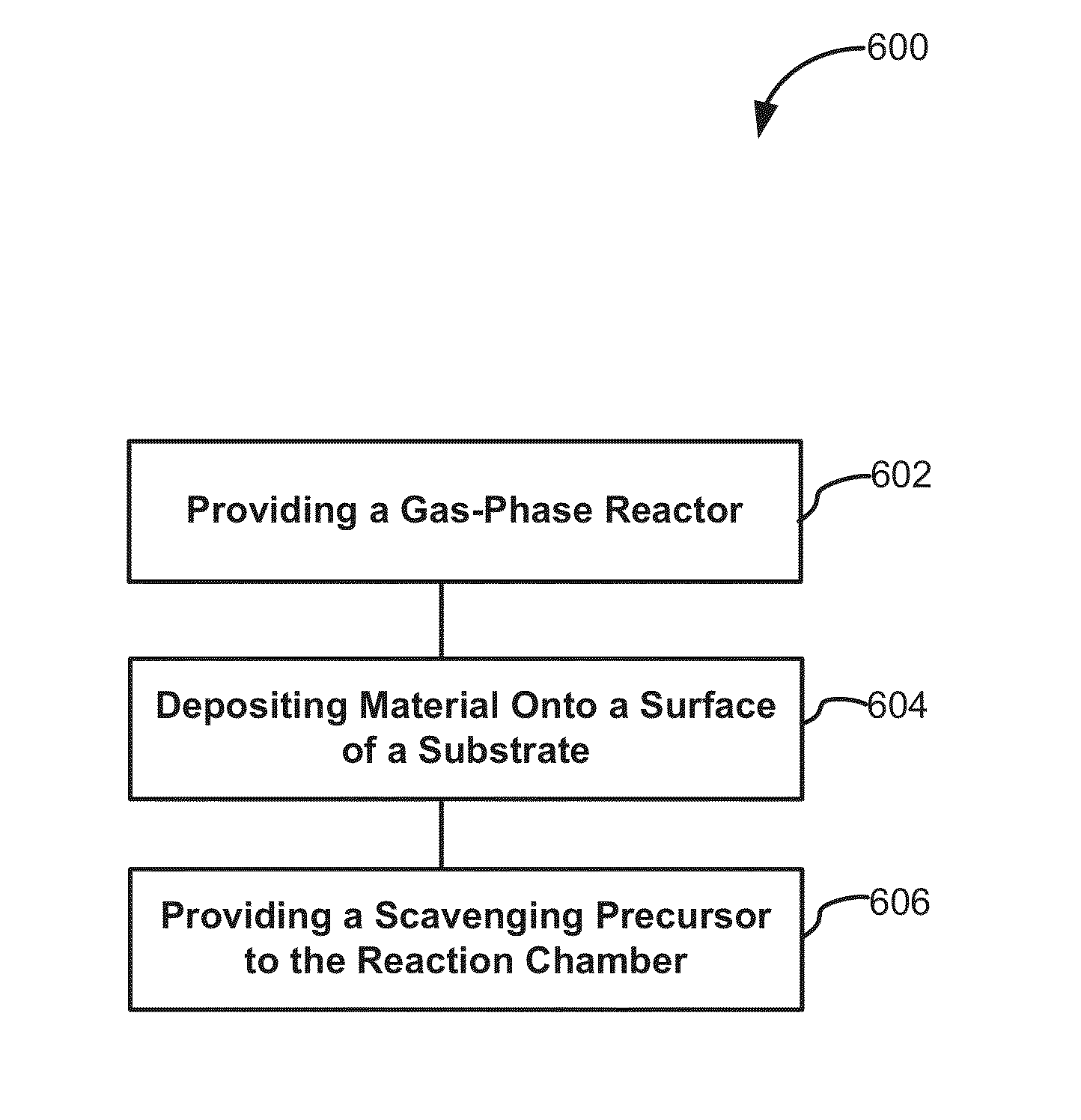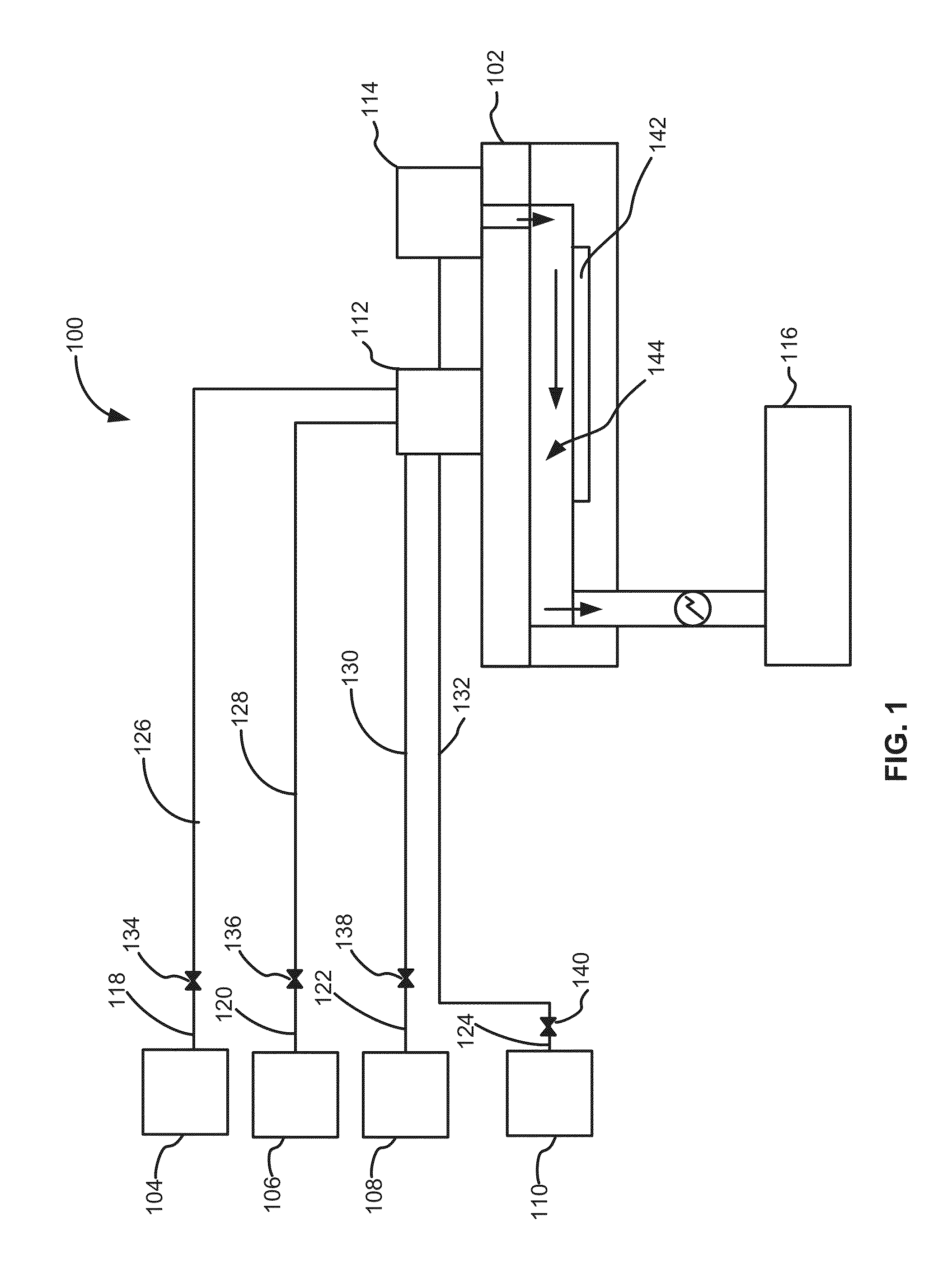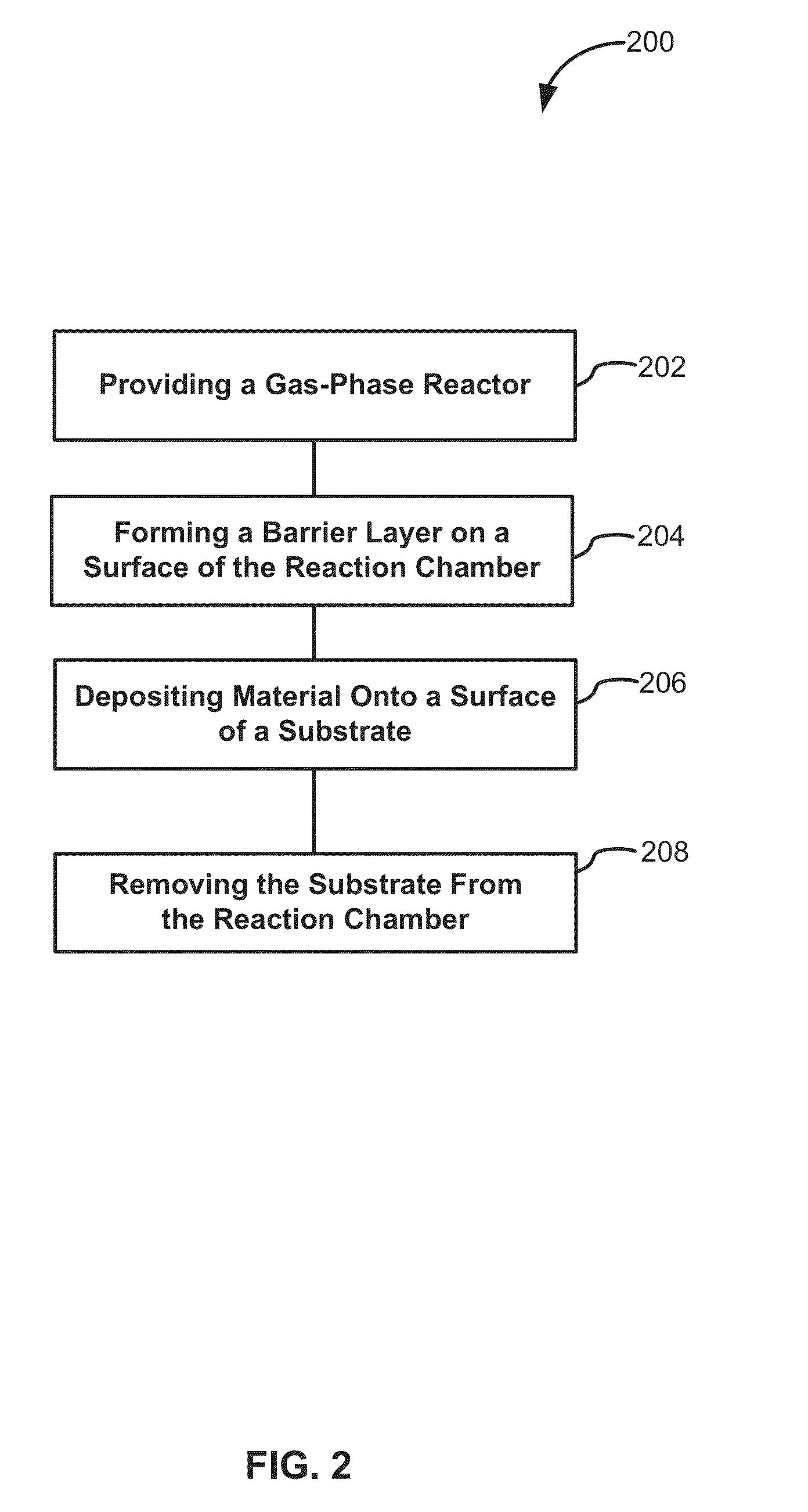Method and system to reduce outgassing in a reaction chamber
a gas phase reaction and gas phase technology, applied in the field of gas phase reaction methods and systems, can solve the problems of unsatisfactory particle formation, uniformity of deposited films, and depletion of subsequently-introduced precursors, so as to reduce the outgassing of substances and mitigate or prevent the reaction of scavenging precursors
- Summary
- Abstract
- Description
- Claims
- Application Information
AI Technical Summary
Benefits of technology
Problems solved by technology
Method used
Image
Examples
Embodiment Construction
[0023]The description of exemplary embodiments of methods and systems provided below is merely exemplary and is intended for purposes of illustration only; the following description is not intended to limit the scope of the disclosure or the claims. Moreover, recitation of multiple embodiments having stated features is not intended to exclude other embodiments having additional features or other embodiments incorporating different combinations of the stated features.
[0024]The present disclosure generally relates to gas-phase reactors, systems and methods. More particularly, the disclosure relates to reactors, systems, and methods that mitigate outgassing of substances from an interior surface of a reaction chamber—e.g., mitigate outgassing from material deposited onto an interior surface of a reaction chamber.
[0025]FIG. 1 illustrates a system 100, including a reactor 102. In the illustrated example, system 100 includes a first precursor source 104, a second precursor source 106, a b...
PUM
| Property | Measurement | Unit |
|---|---|---|
| pressure | aaaaa | aaaaa |
| pressure | aaaaa | aaaaa |
| size | aaaaa | aaaaa |
Abstract
Description
Claims
Application Information
 Login to View More
Login to View More - R&D
- Intellectual Property
- Life Sciences
- Materials
- Tech Scout
- Unparalleled Data Quality
- Higher Quality Content
- 60% Fewer Hallucinations
Browse by: Latest US Patents, China's latest patents, Technical Efficacy Thesaurus, Application Domain, Technology Topic, Popular Technical Reports.
© 2025 PatSnap. All rights reserved.Legal|Privacy policy|Modern Slavery Act Transparency Statement|Sitemap|About US| Contact US: help@patsnap.com



